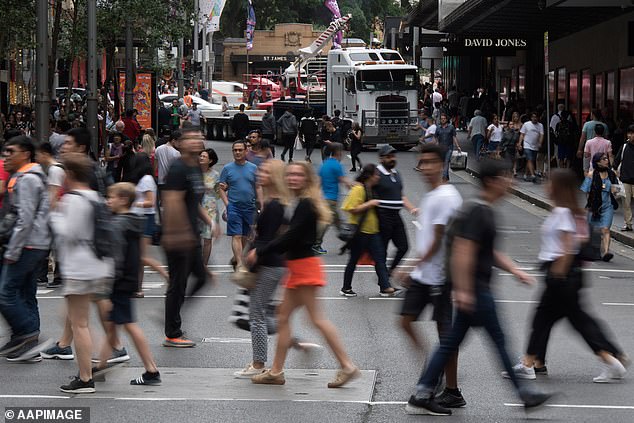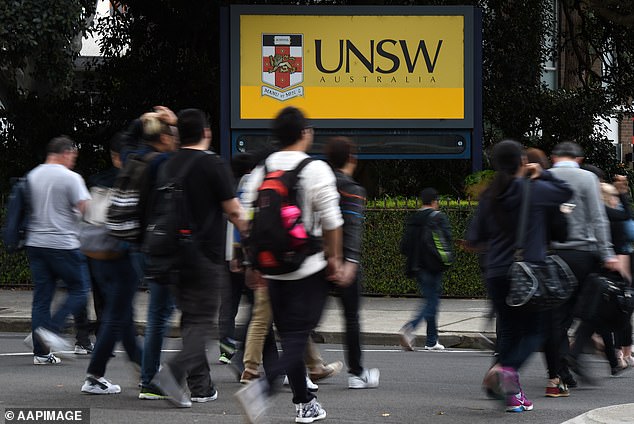Australia’s migration intake will exceed 400,000 as the population surges under Prime Minister Anthony Albanese
Anthony Albanese’s government will miss its target of curbing immigration, given the housing crisis. More than 400,000 new arrivals arrived in Australia in the last financial year.
The government predicted in its May budget last year that the number of foreigners moving to the country would fall to 315,000 in the 12 months to June as a result of the new measures it introduced. However, this was revised down to 375,000 in December and to 395,000 earlier this year.
However, figures released on Thursday by the Australian Bureau of Statistics confirmed there were 388,000 new arrivals in the country in the first nine months of the financial year alone, excluding the remaining four months.
Opposition Leader Peter Dutton said the influx of new residents into the country competing for housing was the reason house prices remained at record highs.
“That’s why Australians can’t afford to buy a home, that’s why rents have gone through the roof and that’s why we’re in the situation we’re in now, with people living without stable housing,” Dutton said.
Home Secretary Murray Watt said migration had been slowed by government measures and data from the remaining four months of the financial year would show migration had fallen further.
“We recognise that we need to ensure that the number of migrants coming to Australia remains at a sustainable level and that is why we have taken a range of measures to reduce that number,” he said.
“We’re starting to see the results of that. The numbers that came out today are actually from March, they’re a little bit behind. And of course some of the measures that we’ve taken didn’t come into effect until after March, so I expect we’ll see that number come down further.”
The Albanian government said it would cut the influx of migrants into Australia to 395,000, but new data from the ABS shows the number of new arrivals will exceed 400,000 in the last financial year

Opposition Leader Peter Dutton said the influx of immigrants was the reason housing in Australia was ‘unaffordable’
Immigration hit a record high of 528,000 new people entering the country in 2022-23 as travel resumed following the Covid pandemic.
According to the government, this is a catch-up, as immigration has fallen sharply during the two-year closure of international borders.
Since then, the decline has been steady, but not to the extent the government had hoped, as the country still relies on international students and foreign workers to fuel the economy.
Susan Lloyd-Hurwitz, chair of the government’s National Housing Supply and Affordability Council, said plans to allow 53,000 fewer foreign students from 2025 would not make access to housing easier.
In August, the federal government announced that a cap of 270,000 international students would be imposed to reduce migration and relieve pressure on the housing market.
But speaking to the National Press Club on Wednesday, Ms Lloyd-Hurwitz said the cap would not solve the problem.
“We find it difficult to imagine that limiting the number of international students would have a major impact on the housing system,” she said.
“It looks like it would be quite damaging to our second largest export industry and probably have little effect on freeing up homes.”

The government plans to cap the number of international students admitted to universities, but a senior official said this would not make much difference to house prices
Universities could increase the number of international students they can admit, but only if they provide more student housing.
It is estimated that university students make up only four percent of renters in Australia.
Ms Lloyd-Hurwitz said there may be other reasons why the number of university students from abroad should be limited, but housing was not one of them.
“It’s not that international students are displacing tenants in our cities, that’s simply not true,” she said.
Dan Tehan, the opposition’s immigration spokesman, said the number of foreign students should be reduced.
“We have seen record numbers of international students… we will wait and see what the government measures actually deliver,” he told ABC Radio on Thursday.
According to the latest figures from the ABS, 509,750 migrants visited the country in the 12 months to March.
NSW received 168,148, 151,740 went to Victoria, 82,794 to Queensland and 64,902 to WA.
